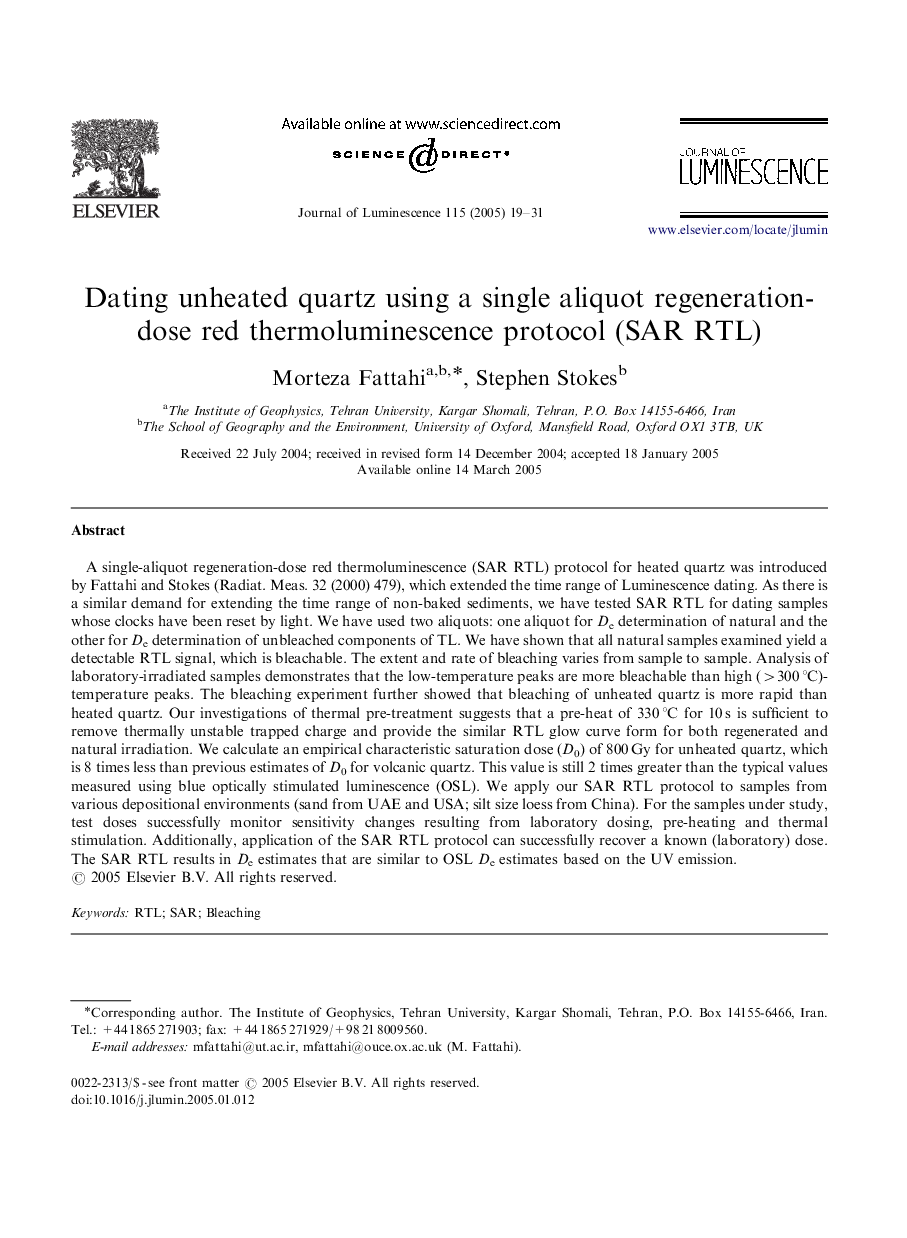| کد مقاله | کد نشریه | سال انتشار | مقاله انگلیسی | نسخه تمام متن |
|---|---|---|---|---|
| 9586268 | 1505935 | 2005 | 13 صفحه PDF | دانلود رایگان |
عنوان انگلیسی مقاله ISI
Dating unheated quartz using a single aliquot regeneration-dose red thermoluminescence protocol (SAR RTL)
دانلود مقاله + سفارش ترجمه
دانلود مقاله ISI انگلیسی
رایگان برای ایرانیان
کلمات کلیدی
موضوعات مرتبط
مهندسی و علوم پایه
شیمی
شیمی تئوریک و عملی
پیش نمایش صفحه اول مقاله

چکیده انگلیسی
A single-aliquot regeneration-dose red thermoluminescence (SAR RTL) protocol for heated quartz was introduced by Fattahi and Stokes (Radiat. Meas. 32 (2000) 479), which extended the time range of Luminescence dating. As there is a similar demand for extending the time range of non-baked sediments, we have tested SAR RTL for dating samples whose clocks have been reset by light. We have used two aliquots: one aliquot for De determination of natural and the other for De determination of unbleached components of TL. We have shown that all natural samples examined yield a detectable RTL signal, which is bleachable. The extent and rate of bleaching varies from sample to sample. Analysis of laboratory-irradiated samples demonstrates that the low-temperature peaks are more bleachable than high (>300 °C)-temperature peaks. The bleaching experiment further showed that bleaching of unheated quartz is more rapid than heated quartz. Our investigations of thermal pre-treatment suggests that a pre-heat of 330 °C for 10 s is sufficient to remove thermally unstable trapped charge and provide the similar RTL glow curve form for both regenerated and natural irradiation. We calculate an empirical characteristic saturation dose (D0) of 800 Gy for unheated quartz, which is 8 times less than previous estimates of D0 for volcanic quartz. This value is still 2 times greater than the typical values measured using blue optically stimulated luminescence (OSL). We apply our SAR RTL protocol to samples from various depositional environments (sand from UAE and USA; silt size loess from China). For the samples under study, test doses successfully monitor sensitivity changes resulting from laboratory dosing, pre-heating and thermal stimulation. Additionally, application of the SAR RTL protocol can successfully recover a known (laboratory) dose. The SAR RTL results in De estimates that are similar to OSL De estimates based on the UV emission.
ناشر
Database: Elsevier - ScienceDirect (ساینس دایرکت)
Journal: Journal of Luminescence - Volume 115, Issues 1â2, October 2005, Pages 19-31
Journal: Journal of Luminescence - Volume 115, Issues 1â2, October 2005, Pages 19-31
نویسندگان
Morteza Fattahi, Stephen Stokes,